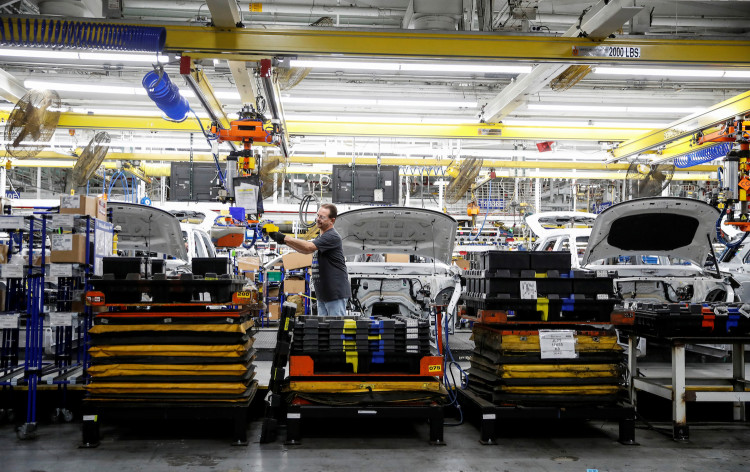As the U.S. economy slows, inflation remains difficult to tame. The closely watched inflation indicators are revised upward across the board, with Q1 Core Personal Consumption Expenditures (PCE) index rising above forecast to an annualized 5%. Is stagflation on the horizon?
On May 25, the latest data from the U.S. Department of Commerce showed that the U.S. Q1 PCE, annualized and adjusted quarterly, rose by 3.8%, revised upward by 0.1 percentage point and surpassing the anticipated 3.7%.
The Fed's favorite inflation measure, the Core PCE Price Index, excluding food and energy, adjusted quarterly on an annualized basis, was revised to 5.0%, up 0.1 percentage points, exceeding the 4.9% forecast. This marked the sixth consecutive quarter the Core PCE has "beaten" market expectations.
Meanwhile, U.S. Q1 real GDP growth was revised upwards to 1.3%, significantly weaker than the Q4 growth rate of 2.6%.
This awkward predicament of a slowing economy paired with rising inflation presents a conundrum for the Federal Reserve. Following the report's release, swap contracts fully priced in a 25-basis point rate hike before the Fed's July meeting.
Yields on U.S. Treasury bonds rose, with the 10-year yield rising 3.80 basis points to 3.757%. Spot gold continued to decline, widening its short-term losses to $12, falling below $1950 per ounce.
Is stagflation drawing near? What can the Fed do?
Against the backdrop of a robust labor market in the early months of this year, consumer spending continues, and higher wages are a major driver of inflation.
The latest data shows that the number of initial jobless claims in the U.S. for the week of May 20 was 229,000, below the forecast of 245,000, suggesting continued resilience in the labor market.
The U.S. service sector PMI data for May, released earlier, hit a 13-month high due to increased demand from new and existing clients. With strong demand, tightening labor market conditions are likely to further exacerbate inflationary pressure. Financial blog Zerohedge comments, "The signs of stagflation are here."
Chris Zaccarelli, Chief Investment Officer of Independent Advisor Alliance, previously commented that with economic growth slowing and inflation rising, the Fed obviously needs to continue raising rates (due to inflation), even as the economy slows. Given that core PCE is far from the Fed's 2% target - for instance, Q1 PCE inflation rate significantly rose compared to Q4 last year - we are starting to worry about the possibility of stagflation.
Minutes from the Fed's May meeting released yesterday show that there was disagreement among Fed policymakers on whether to raise interest rates again next month, but all emphasized that actions would depend on data.
St. Louis Fed President James Bullard said on Monday that he expects two more rate hikes this year to keep soaring inflation in check. He noted that current inflation levels are still too high, and further rate hikes will be necessary to curb inflation: "I think there will be two more (25bps hikes) this year."






